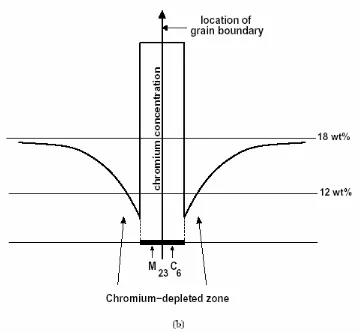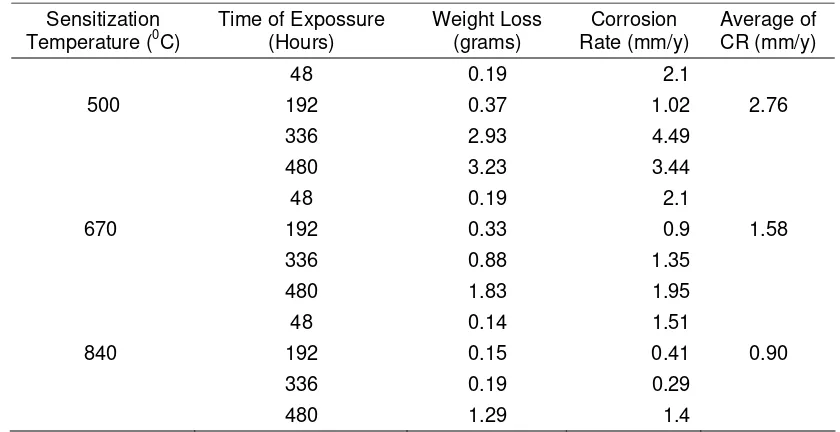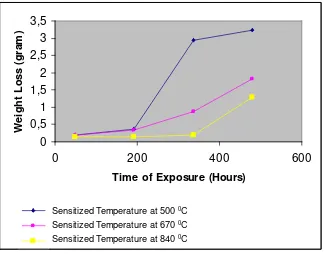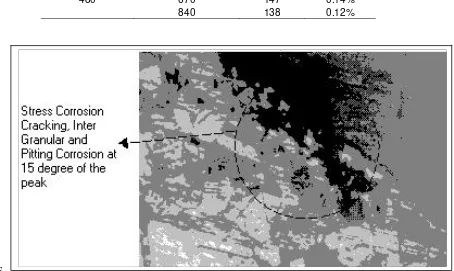T
J U R N A L
E K N I K
ISSN 0854-2139
Reinforcement Position For Improving The Early Life Strength Of cold
Bituminous Emulsion Mixture (CBEM)
I.N.A. Thanaya
Penelitian Potensi Pemanfaatan Kolong Sebagai Sumber Air Bersih
R. Jayadi
Kontaminasi Timbal (Pb) Pada Tanah Di Tempat Pembuangan Akhir
Sampah Sumompo Kota Manado
Z.E. Tamod, Soemarno, Syekfani, K. Hidayat
Penerapan Model Sinus – Perkalian Pada Rumusan Fungsi Kinerja Irigasi
Untuk Optimasi Dengan Program Dinamik
W. Soetopo
Deteksi Dan Identifikasi Huruf Dengan Menggunakan Jaringan Neural
Untuk Monitoring Kendaraan Bermotor
T.S. Widodo
Implementation Of Wilkinson Power Divider In Narrow Band Monostatic
Microwave Radar (MMR)
R. Yuwono
The Effect Of Sensitization Temperature On Stress Corrosion Cracking
Of Stainless Steel AISI 304 In Sulphate Acid Environment
I. Sukmana, Y. Burhanuddin
Pengaruh Tegangan Maksimum Terhadap Derajat Belokan Jalur
Perambatan Retak – Lelah Unik Mode – Cmapuran I + II Pada Pelat
Aluminium Murni Komersial
Y.S. Irawan
Analisis Dan Perancangan Integrated Circuit (IC) Nand Empat Gerbang
Berteknologi HCMOS (High Speed Complementary Metal Oxide Silicon)
A. Darmawansyah, A. Susanto, T.S. Widodo, K. Abraha
JURNAL TEKNIK
Volume 14
Nomor. 2
Hal. 70 - 144
Malang,
Agustus 2007
JURNAL
TEKNIK
PENANGGUNG JAWAB Dekan Fakultas Teknik Universitas Brawijaya
PEMIMPIN UMUM Pembantu Dekan I Fakultas Teknik Universitas Brawijaya
PEMIMPIN REDAKSI Prof. Ir. Antariksa, M.Eng., Ph.D
DEWAN REDAKSI Prof. Ir. Budiono Mismail, M.S.E.E., Ph.D. Prof. Dr. Ir. Suhardjono, Dipl.HE., M.Pd. Dr. Ir. Galih Widjil Pangarsa, DEA. Prof. Ir. I.N.G. Wardana, M.Eng., Ph.D. Ir. Achmad Wicaksono, M.Eng., Ph.D. Ir. Agus Suharyanto, M.Eng., Ph.D. Dr. Ir. Ludfi Djakfar, MSCE. Prof. Ir. Sudjito, Ph.D. Dr. Ir. Arief Rachmansyah
REDAKTUR PELAKSANA Hendi Bowoputro, ST., MT Moch. Agus Choiron, ST., MT Dian Sisinggih, ST., MT Suprapto, ST., MT Herry Santosa, ST., MT Adi Joni, SE
KESEKRETARIATAN Desi Kurniasari, S.Pd
JURNAL TEKNIK, diterbitkan tiga kali dalam satu tahun, pada bulan April, Agustus dan Desember. Pendapat yang dinyatakan dalam jurnal ini sepenuhnya merupakan pendapat pribadi penulis, tidak mencerminkan pendapat penerbit dan dewan redaksi. Redaksi menentukan dimuat atau tidak dimuatannya suatu naskah dan dapat memperbaiki atau meringkas tulisan yang akan dimuat tanpa meragukan maksud dan tujuan.
JURNAL TEKNIK Terakreditasi berdasar Surat Keputusan Dirjen Dikti No. 55/DIKTI/Kep/2005 tanggal 17 November 2005
Naskah dikirim ke Redaksi JURNAL TEKNIK, Fakultas Teknik Universitas Brawijaya Jl. Mayjen Haryono 167 Malang 65145, Telp (0341) 553286; Fax (0341) 553286
Website:http/teknik.brawijaya.ac.id/jurnal
DARI REDAKSI
JURNAL TEKNIK diterbitkan secara berkala oleh Fakultas Teknik Universitas Brawijaya sebagai wahana komunikasi, tukar menukar informasi dan pengetahuan terkini. Seperti edisi sebelumnya, pada edisi ini JURNAL TEKNIK Fakultas Teknik Universitas Brawijaya Volume 14 Nomor 2 Agustus 2007 menampilkan beberapa makalah atau artikel terdiri dari dari berbagai disiplin ilmu, baik dari kelompok Teknik Sipil dan Perencanaan maupun dari kelompok Teknologi Industri.
Redaksi menerima segala bentuk artikel yang berhubungan dengan ilmu pengetahuan dan teknologi selama artikel tersebut merupakan tulisan asli, baik berupa gagasan ataupun penelitian secara perorangan maupun kelompok.
Kepada para pembaca, kami ucapkan terima kasih serta selamat membaca dan berkarya.
Redaksi
ALAMAT SEKRETARIAT/ REDAKSI
Fakultas Teknik Universitas Brawijaya Jl. Mayjend Haryono 167 Malang. 65145 Telp. (0341) 551430 Fax. (0341) 551430 Website: Http://teknik.brawijaya.ac.id/jurnal E-mail: [email protected]; [email protected]
J U R N A L
D A F T A R I S I
Volume 14 Nomor. 2 Agustus 2007
Teknik Sipil dan Perencanaan:
Reinforcement Position For Improving The Early Life Strength Of Cold Bituminous Emulsion Mixture (CBEM)
I.N.A Thanaya
70 - 77
Penelitian Potensi Pemanfaatan Kolong Sebagai Sumber Air Bersih
R. Jayadi
78 – 89
Kontaminasi Timbal (Pb) Pada Tanah Di Tempat Pembuangan Akhir Sampah Sumompo Kota Manado
Z.E Tamod, Soemarno, Syekfani, K. Hidayat
90 - 96 Penerapan Model Sinus – Perkalian Pada Rumusan Fungsi Kinerja Irigasi Untuk
Optimasi Dengan Program Dinamik
W. Soetopo
97 - 103
Teknologi Industri
Deteksi Dan Identifikasi Huruf Dengan Menggunakan Jaringan Neural
Untuk Monitoring Kendaraan Bermotor
T.S. Widodo
104 - 108
Implementation Of Wilkinson Power Divider In Narrow Band
Monostatic Microwave Radar (MMR)
R. Yuwono
109 - 114 The Effect Of Sensitization Temperature On Stress Corrosion Cracking Of Stainless Steel
AISI 304 In Sulphate Acid Environment
I. Sukmana, Y. Burhanuddin
115 - 122
Pengaruh Tegangan Maksimum Terhadap Derajat Belokan Jalur
Perambatan Retak – Lelah Unik Mode – Campuran I + II Pada Pelat
Aluminium Murni Komersial
Y.S. Irawan
123 - 129
Analisis Dan Perancangan
Integrated Circuit (IC)
Nand Empat Gerbang
Berteknologi HCMOS (
High Speed Complementary Metal Oxide
Silicon
)
A. Darmawansyah, A. Susanto, T.S. Widodo, K. Abraha
JURNAL TEKNIK/Volume 14 Nomor. 2 AGUSTUS 2007 ISSN 0854 - 2139 115
THE EFFECT OF SENSITIZATION TEMPERATURE ON STRESS
CORROSION CRACKING OF STAINLESS STEEL AISI 304 IN SULPHATE
ACID ENVIRONMENT
I. Sukmana & Y. Burhanuddin
Dosen Jurusan Teknik Mesin, Fakultas Teknik-Universitas Lampung Jl. Prof. Soemantri Brojonegoro 1, Bandar Lampung
Email: [email protected]
A B S T R A C T
Austenitic stainless steel 304 (AISI 304) has a good corrosion resistant, but a heat treatment process can cause a sensitization phenomenon and the corrosion resistant will decrease. One of the most serious corrosion problems that can occur is stress corrosion cracking (SCC). This study is to determine the effect of sensitization temperatures (i.e. 500
oC, 670 oC, and 840 oC) on the SCC phenomenon of AISI 304 in sulphate acid environment with total immersion
method. It was observed for the specimen with sensitization temperatures of 500 oC and 670 oC, the dominant corrosion
form is pitting corrosion, where the highest corrosion rate was occur on the specimen with sensitization temperature of
500 oC after 336 hours of exposure. Average of Corrosion Rate of specimen with sensitization temperatures of 500 oC,
670 oC, and 840 oC after 480 hours of exposure are 2.76 mm/y, 1.58 mm/y, and 0.9 mm/y. Stress corrosion cracking
occurs on the specimen with sensitization temperature of 840 oC after 480 hours of exposure.
Keywords: stress corrosion cracking, sensitization temperature, and total immersion.
A B S T R A K
Baja tahan karat austenitik AISI 304 memiliki ketahanan korosi yang baik, namun bila mengalami perlakuan panas dapat terjadi fenomena sensitisasi sehingga akan menurunkan ketahanan korosinya. Fenomena korosi yang dapat terjadi terutama adalah korosi retak tegang (SCC). Penelitian ini dilakukan untuk mengetahui efek temperatur sensitisasi (500 oC, 670 oC, dan 840 oC) terhadap fenomena SCC pada AISI 304 di lingkungan asam sulfat dengan metoda perendaman total. Dalam penelitian ini ditemukan bahwa temperatur sensitisasi 500 oC dan 670 oCakan menyebabkan korosi Pitting, angka laju korosi tertinggi ditemukan pada specimen dengan temperatur sensitisasi 500 oC setelah 336 jam perendam. Laju korosi rata-rata setelah 480 jam perendaman untuk temperatur sensitisasi 500 oC, 670 oC, dan 840 o
C masing-masing adalah 2.76 mm/y, 1.58 mm/y, dan 0.9 mm/y. Fenomena korosi retak tegang ditemukan pada spesimen dengan temperatur sensitisasi pada 840 oC setelah 480 jam perendaman.
Kata kunci: korosi retak tegang, temperatur sensitisasi, dan perendaman total.
INTRODUCTION
Austenitic Stainless Steels are the most widely applicated steel in industry, about 70-80% of stainlless steel production. AISI 304 is also the most popular Chrom stainless steel that has a good corrosion resistance and mechanical properties. AISI 304 is the iron-based alloy that contains more than 12% Chromium that can forms a protective oxide film on the surface to hence the corrosion resistance. Oxide film can regenerate naturally when the surface of steel was damage. However, the precipitation process of Chrom-Carbide due to the heat treatment processes or welding processes can cause the sensitization phenomenon and later will promote a spesific corrosion phenomenon, namely environmentally induced cracking (EIC).
Environmentally Induced Cracking (EIC) is general term for brittle mechanical failure that results from a synergism of tensile stress, susceptible material, and corrosive environment. Corrosion rate is usually quite low and design stresses to cause EIC are often below the yield stress. Stress Corrosion Cracking is the popular phenomenon at EIC(Jones, 1991).
JURNAL TEKNIK/Volume 14 Nomor. 2 AGUSTUS 2007 ISSN 0854 - 2139 116
precipitates to forms Cr23C6 and the regions with
less Cr content will have less corrosion resistant and known as Chromium-depleted zone (Decker & Langer, 1987).
It is known that the effect of sensitization phenomenon of austenitic stainless steel is a great importance, especially for the application at Oil Company, chemical and nuclear industry and also shipping company. Previous study has been investigated at boiling water condition and with the H2SO4 environment that the intergranular cracking
may arise after 72 hours period of exposure (Jones, 1991).
In Austenitic stainless steel, an intermediate temperature range of 425 to 840 0C (840 – 1550 0F) Chrom carbides, (Fe, Cr)23C6 are insoluble and
precipitate at grain boundaries. Above 840 0C the Chromium carbides are soluble; below 4250C the diffusion rate of carbon is too low to permit formation of the carbides. Figure 1 show that the Chromium carbide precipitates are very high in Chromium, but the matrix alloy is depleted of Chromium in the grain boundaries.
Previous researcher reported the microstructure of sensitized austenitic stainless steel. The specimen was prepared with a solution treatment at 1050 0C for 1 hour followed by water quenching. For the sensitization process, samples were immersed in a batch of solution-treated at 670 0C, in a muffle furnace for 4 hours. For the testing of sensitization,
the specimen was subjected to the oxalic acid etch test. A ditch microstructure was taken to be confirmation of the sensitization (Singh, 1987).
Carbide precipitate (i.e. M23C6) also can
induce by the welding process of austenitic stainless stell. It causes Chromium depleted zone near the grain boundaries and then decrease the stress corrosion cracking resistant of the welded stell as reported by Gooch, (1984).
Other researcher founded that SCC can occur when the steels are expossed to the “high pH” as well as “near-neutral pH” or “low pH” solution (Fang, et al., 2003). Stress corrosion cracking of AISI 321 stainless steel on acidic chloride environment also has been reported by other researcher (Huang, 2001).
Although massive progresses have been made, the corrosion forms and processes that associated with SCC of austenitic stainless steel on the sulphate acid environment are still not clear. The objective of this study was to determine the effect of sensitization temperatures on the SCC process of austenitic stainless steel AISI 304 on the sulphate acid (H2SO4) environment.
Three different sensitization temperatures (i.e., 500 0C, 670 0C, and 840 0C) have been chosen in this study. The variations of sensitizations temperature are based on the diagram of Time-temperture-precipitation for M23C6 of AISI 304 as
JURNAL TEKNIK/Volume 14 Nomor. 2 AGUSTUS 2007 ISSN 0854 - 2139 117 Figure 1 Chromium Depleted Zone at the Grain Boundaries (Too, C.H., 2002)
(a) Chromium depleted zone and M23C6 precipitates (b) Chrom concentration
Figure 2 Time-Temperature-Precipitation for C23C6
in 304 austenitic stainless steel
METHODOLOGY
Material and Experimental Procedures
Material that used in this study was AISI 304 and specimen was prepared based on ASTM standard (Decker & Langer, 1987) and for preparation, cleaning, and evaluation was based on ASTM G 1 – 72 standards (Annual Book of ASTM, 1979).
Generally, a testing specimen was prepared by cutting the AISI 304 industrial standard plate into strips with a specific dimension (Figure 3).
For the sensitization process, the strips were then placed on the salt bath furnace that set in three different temperatures (i.e. 500 0C, 670 0C, and 840
0
C) for 4 hours of sensitization time and then quenched in water.
Figure 3 Dimension of the specimen
To clean the oxide film at the surface that caused by sensitisation process, specimen was immersed on the aquadestilata solution containing
7
Bending area
100 3
JURNAL TEKNIK/Volume 14 Nomor. 2 AGUSTUS 2007 ISSN 0854 - 2139 118
10% (volume/volume) of HNO3 for 1 hour at
temperature of 60 0C (Annual Book of ASTM, 1979).
U-Bend Corrosion Test Specimen
After the cleaning process, the strips were then bent approximately 1800 around a predetermined radius and maintained in this plastically (or elastically) deformed condition during the SCC test. The bending method was based on ASTM G30 and the final specimen is shown in Figure 4.
Figure 4 Final U Bend Specimen
Exposure Method
There are two types of SCC test expossure as suggested by the ASTM Standard, i.e. cyclic immersion and total immersion (Annual Book of ASTM, 1979). This study was conducted with total immersion method, where the specimen was immersed on the suphate acid until the evaluation time as shown in Figure 5 (not the exact scale).
Weight Loss Evaluation
The calculation of the average corrosion rate can obtain with the Weight Loss method based on the ASTM standard as follows (Jones, 1991):
Corrosion Rate = (K ×W)/(A ×T ×D)..1
Corrosion Forms and Micro Structure
To better understanding of the initiation and propagation process of EIC, the evaluation will be based on the corrosion forms and micro-struture. Generally, several corrosion forms will associated with EIC of austenitic stainless steel at acidic environments, there are:
(a) Uniform corrosion, (b) Pitting corrosion, and (c) Intergranular, and (d) SCC.
The evaluation of uniform and pitting corrosion will be based on the macro structure evaluation while inter granular and stress corrosion cracking were by the micro-structure analysis.
Pitting corrosion will be determined by the number of cases per surface area and the average deep of pitting’s penetrations.
RESULT AND DISCUSSION
Comparison between the structure of non-sensitized and non-sensitized steels (i.e. 500 0C, 670 0C, and 840 0C) was presented in Figure 6. The micro structure of non-sensitized steel indicates the regular forms at the grain boundaries region, while on the sensitized ones indicate the dich structure. Higher sensitization temperature tends to produce dicher grain boundaries.
It can be hypothesized that the black dots on the grain boundaries and ditch structures were associated with the precipitation of Cr23C6 as also
suggested by other researchers (Huang, 2001; Sourmil, 2003; and Too, 2002).
Bench Work
Specimen H2SO4 inside
the glass test Holder
JURNAL TEKNIK/Volume 14 Nomor. 2 AGUSTUS 2007 ISSN 0854 - 2139
119
Figure 6 Micro Stucture of Stainless Steel AISI 304 (magnification 360x)(a) Non-Sensitized (b) Sensitized at 500 0C (c) 670 0C, and (d) 840 0C
Table 1 Result of the Corrosion Test
Sensitization
Temperature (0C)
Time of Expossure (Hours)
Weight Loss (grams)
Corrosion Rate (mm/y)
Average of CR (mm/y)
48 0.19 2.1
500 192 0.37 1.02 2.76
336 2.93 4.49
480 3.23 3.44
48 0.19 2.1
670 192 0.33 0.9 1.58
336 0.88 1.35
480 1.83 1.95
48 0.14 1.51
840 192 0.15 0.41 0.90
336 0.19 0.29
480 1.29 1.4
Data of weight loss, Corrosion Rate (CR) as well as average of CR over the exposure time were presented on Table 1. The CR was calculated based on equation (1).
Weight loss trend during the exposure time for 3 different sensitization temperatures can be presented as relation between weight loss and time of exposure as shown in Figure 7.
(a)
(b)
JURNAL TEKNIK/Volume 14 Nomor. 2 AGUSTUS 2007 ISSN 0854 - 2139 120
Figure 7 Trend of Weight Loss during Exposure
Table 2 Corrosion Forms and the Regions
Sensitized Temperature
Time of Expossure
(Hours) Corrosion Forms
Corrosion
Based on Table 1 above, the highest CR is 4.49 mm/y where it was occur on the specimen with sensitization temperature of 500 0C after 336 hours of exposure.
The average CR number of sensitization temperature of 500 0C (CR = 2.76) was higher than 600 0C (CR = 1.58) and 800 0C (CR = 0.90) respectively. Based on Figure 7 above, until 192
hours of exposure, the trend of weight loss of every sensitized specimen were relatively equal. After 192 hours, the specimen that sensitized on 500 0C gives the highest weight loss number. Since the weight loss number was calculated based on the data of uniform corrosion, the other corrosion forms will be evaluated separately
Time of Exposure (Hours)
W
Sensitized Temperature at 840 0C
Sensitized Temperature at 670 0C
JURNAL TEKNIK/Volume 14 Nomor. 2 AGUSTUS 2007 ISSN 0854 - 2139 121 Table 3 Penetration of Pitting Corrosion after 480 hours of exposure
Time of Exposure (Hours)
igure 8 SCC and IG Corrosion of sensitized specimen at 840 0C (magnification 180x)
Data of the forms and corrosion region that evaluated with the macro and micro-structure analyses was presented on Table 2. The Evaluation of penetration of pitting corrosion after 480 hours of exposure is shown on Table 3.
Based on Table 2 above, stress corrosion cracking and IG corrosion were not occur on the specimen that sensitized at 500 0C or 670 0C but only pitting corrosion, even after 480 hours of exposure. For specimen that sensitized at 840 0C, SCC was initiated by uniform after 48 hours of exposure, followed by pitting and finally inter-granular and SCC corrosion after 480 hours. The inter-granular as well as SCC forms that founded in this study are presented in Figure 8. It can be hypothesed that the sensitization temperature of 840
0
C is the most potential one on inducing the EIC of stainless steel AISI 304 when exposed on sulphate acid environment. Based on Table 3 above, the sensitization temperature of 670 0C was give the highest number of pitting corrosion as well as
average pitting penetration
, followed by
840 0C and 500 0C respectivelySCC process and the corrosion forms during the exposure time of sensitized steel at themperature of 840 0C, can be described as follow:
Uniform Corrosion Æ Pitting nucleation Æ
pitting growth Æ Inter-Granular Æ SCC.
Our finding of the continous process of stress corrosion cracking that initiated by several corrosion forms was in good agreements with results that had already reported by other researchers (Meng,. et al., 2003 and Krawiec,. et al., 2006).
CONCLUSIONS
JURNAL TEKNIK/Volume 14 Nomor. 2 AGUSTUS 2007 ISSN 0854 - 2139 122
1. Sensitized temperature of 500 0C give the higest average of corrosion rate (2.76 mm/y) and followed by 670 0C (1.58 mm/y) and 840 0C (0.9 mm/y).
2. Dominant corrosion form of specimen sensitized at 500 0C and 670 0C is pitting
corrosion without inter-granular as well as SCC, even after 480 hours of exposure.
Inter-Granular and SCC forms were occur on the specimen that sensitized at temperature of 840
0C.
REFERENCES
Annual Book of ASTM, 1979, Preparing & Evaluating Corrosion Test Specimens, G1–72 pp. 781 – 868.
Decker, R.F. & Langer, E.L., 1987, ASM Metals Handbook of Corrosion, Vol. 13, 9th Edition, ASM International, Ohio.
Fang, B.Y. et. al., 2003, Review of Stress Corrosion Cracking of Pipeline Steel in “low pH” and “high pH” solutions, Journal of Material Science, Vol. 38, pp. 127-132.
Huang, Y., 2001, Stress Corrosion Cracking of AISI 321 Stainless Stell in Acidic Chloride Solution, Journal of Material Science, Vol. 25, pp. 47-51.
Jones, D.A., 1991, Principles and Prevention of Corrosion, 2nd Edition, MacMillan Publishing, New York.
Krawiek, H. et al., 2006, Dissolution of Chromium-Enriched Inclusions and Pitting Corrosion of Resulfurized Stainless Steel, Metallurgical and Materials Transcastions, Vol. 37A, pp. 1541-1549.
Meng, Q. et al., 2003, Stainless-steel Corrosion and MnS inclusions, Nature, Vol. 424, pp. 389-390.
Singh, P.M & Malhotra, S.N., 1987, Stress Corrosion Cracking Susceptibility of various Austenitic Stainless Steel in Polythionic Acid, NACE Corrosion Journal, Vol 43 No. 1 pp.26 – 31.
Sourmail, T. et al., 2003, Sensitisation and Evolution of Chromium-depleted Zones in Fe-Cr-Ni-C Systems, ISIJ International, Vol. 43, pp. 1814-1820.
Too, C.H., 2002, Sensitistion of Austenitic Stainless Steel, Master Thesis, University of Chambridge, Chambridge.




